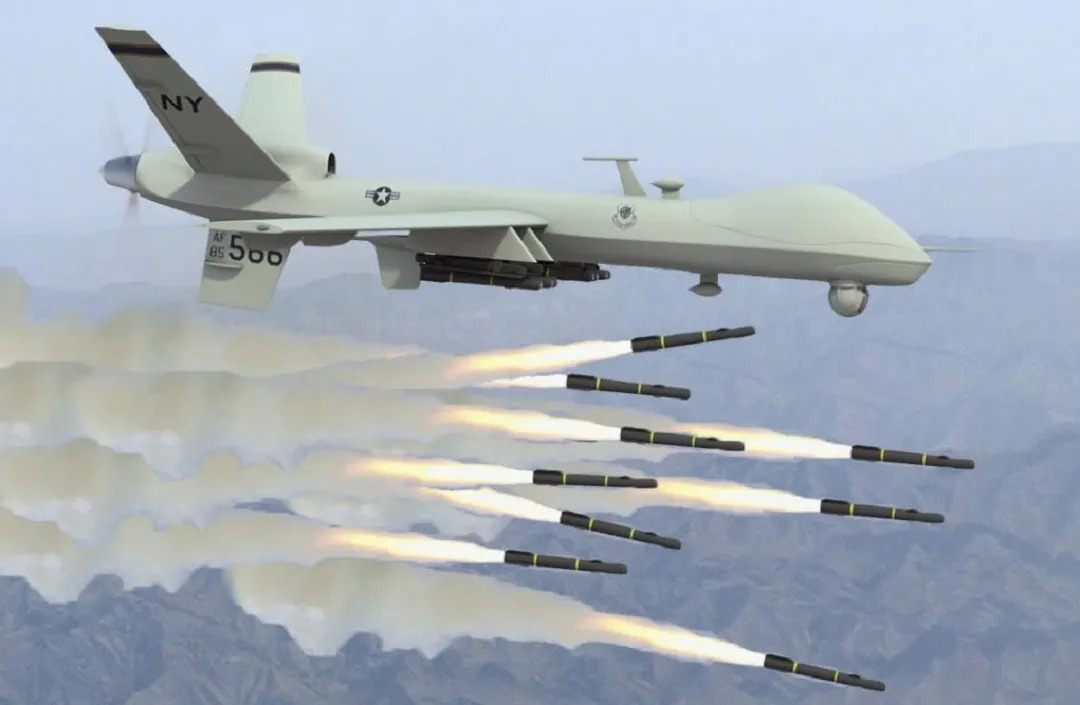MQ-9 Reaper And The Strengthening Of Armed Forces
Context :
The Defence Ministry expects sending the Letter of Request (LoR) to the United States by the first week of July as part of the procedure to finalise the agreement for the purchase of 31 MQ-9B-armed High Altitude Long Endurance (HALE) Unmanned Aerial Vehicles (UAV). This would start an acquisition process through the U.S. government’s Foreign Military Sales (FMS) programme.
MQ-9 Reaper Unmanned Aerial Vehicles (UAVs)
- Unmanned aerial vehicle (UAV) General Atomics Aeronautical Systems developed the MQ-9 Reaper, often referred to as Predator B, principally for the United States Air Force (USAF).
- Its capabilities include hunter-killer and long-endurance, high-altitude surveillance.
- Compared to the MQ-1 Predator, the MQ-9 Reaper is larger, heavier, and more powerful.
- The same ground controls as the MQ-1 Predator can be used to control it.
- The turboprop engine on the Reaper has 950 shaft horsepower, which is a significant increase over the piston engine on the Predator.
- Due to its enhanced power, the Reaper can cruise at a speed that is almost three times that of the MQ-1 Predator while towing a payload that is 15 times bigger.
- Aircrew in the Ground Control Station (GCS) keep an eye on the aircraft and manage its operations, including the use of weapons.
- The United States Air Force has utilised the MQ-9 Reaper in several capacities, including intelligence, surveillance, reconnaissance, and a real hunter-killer role.
- When the New York Air National Guard 174th Attack Wing fully adopted the use of unmanned combat aerial vehicles (UCAVs) in 2008, it became the first fighter unit to go from piloted planes to MQ-9A Reapers.
- The USAF operated more than 300 MQ-9 Reapers as of May 2021, and the FY2021 Congressional budget authorised the purchase of 16 more units.
- All new MQ-9 aircraft is anticipated to feature these equipment enhancements, which have been put onto some MQ-9 aircraft to boost performance in high-stress combat scenarios.
- The MQ-9 fleet’s anticipated end of service life is 2035.
- Other organisations, like as the United States Customs and Border Protection and the militaries of numerous other nations, also employ the MQ-9 Reaper.
- According to estimates, an MQ-9 will cost roughly $30 million in 2021 USD per unit.
How does the Foreign Military Sales (FMS) programme work?
- The Defense Ministry of India is expected to issue a Letter of Request (LoR) to the U.S. government by the first week of July to initiate the acquisition process through the Foreign Military Sales (FMS) program.
- The Defense Acquisition Council, chaired by Defense Minister Rajnath Singh, has already granted acceptance of necessity for the acquisition of 31 MQ-9Bs. Once the LoR is sent to the U.S. Department of Defense, a Letter of Acceptance (LoA) will be issued, followed by commercial negotiations. The potential sale will also require notification to the U.S. Congress, and the final approval will be sought from the Cabinet Committee on Security.
- The Foreign Military Sales (FMS) programme is a key component of U.S. foreign policy and a type of security aid permitted by the Arms Export Control Act (AECA), as amended [22 U.S.C. 2751 et seq.].
- According to Section 3 of the AECA, the United States may sell defence goods and services to other nations and international organisations if the President explicitly determines that doing so will increase national security and advance world peace.
- Under FMS, a Letter of Offer and Acceptance (LOA), also known as a government-to-government agreement, is signed between the U.S. Government and a foreign country.
Economical Benefits for India
- Indigenous material: In the MQ-9B deal, India wants to enhance the amount of indigenous material and sourcing. The projected indigenous content is now in the range of 8% to 9%, but India wants to increase it to 15% to 20%. The manufacturer, General Atomics, is supportive to boosting indigenous content, subject to U.S. government approval. Discussions are ongoing.
- Manufacturing in India: As per the agreement, some MQ-9B parts would be produced in India. The prospect of producing electronics, sensors, and avionics domestically is also being discussed. In this regard, General Atomics is collaborating with a number of Indian businesses.
- Assembly and Maintenance: According to the joint statement released after negotiations between U.S. President Joe Biden and Indian Prime Minister Narendra Modi, the MQ-9Bs will be assembled in India. A comprehensive worldwide Maintenance, Repair, and Overhaul (MRO) facility will be built by General Atomics in India to serve the nation’s long-term objective of enhancing indigenous defence capabilities.
Defence Capabilities Of India
- The MQ-9B UAVs will considerably improve the Indian Navy’s intelligence, surveillance, and reconnaissance (ISR) capabilities in the Indo-Pacific region, hence it is of particular interest to them. At a substantially cheaper cost per hour, the MQ-9B provides around 80% of the functionality of a sizable human-flown maritime patrol aircraft.
- With the current stalemate with China in Ladakh and the escalating tensions with Pakistan, India needs MQ-9B armed drones to improve its observation and strike capabilities across its land and marine frontiers.
- In order to defend its crucial sea routes of communication and trade and to fight the growing presence of Chinese submarines and warships in the Indian Ocean Region, India also needs MQ-9B armed drones.
- In order to help its counterterrorism and counterinsurgency operations in Kashmir and other areas, India also requires MQ-9B armed drones.





